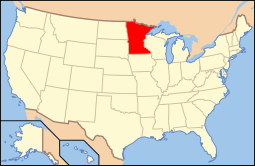Harris Addition Historic District
|
Harris Addition Historic District | |
  | |
| Location | Roughly bounded by 16th St, Dalton St., 22nd St. and Edmond St., St. Joseph, Missouri |
|---|---|
| Coordinates | 39°46′04″N 94°50′17″W / 39.76778°N 94.83806°WCoordinates: 39°46′04″N 94°50′17″W / 39.76778°N 94.83806°W |
| Area | 67.7 acres (27.4 ha) |
| Built by | Englehart, George J.; Haynes, W.H. |
| Architectural style | Colonial Revival, Tudor Revival, et al. |
| MPS | St. Joseph MPS |
| NRHP Reference # | 01000723[1] |
| Added to NRHP | January 13, 2003 |
Harris Addition Historic District is a national historic district located at St. Joseph, Missouri. The district encompasses 288 contributing buildings and 1 contributing site in a predominantly residential section of St. Joseph. It developed between about 1866 and 1940, and includes representative examples of Colonial Revival, Tudor Revival, and American Craftsman style architecture. Notable buildings include the William Payne House (1889), W.C. Green Apartment Building (c. 1910), C.B. Powers House (c. 1888), the Parry-Notter House designed by noted architect Edmond Jacques Eckel (1845–1934), and a number of speculative houses built by George J. Englehart and W.H. Haynes.[2]
It was listed on the National Register of Historic Places in 2003.[1]
References
- 1 2 National Park Service (2010-07-09). "National Register Information System". National Register of Historic Places. National Park Service.
- ↑ John Linn Hopkins & Marsha R. Oates (November 2000). "National Register of Historic Places Inventory Nomination Form: Harris Addition Historic District" (PDF). Missouri Department of Natural Resources. Retrieved 2016-09-01. and Accompanying map

